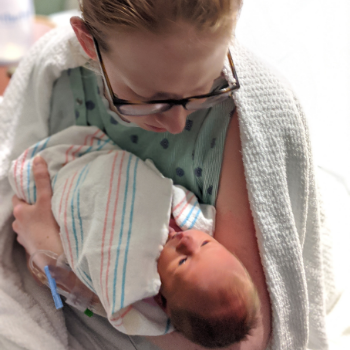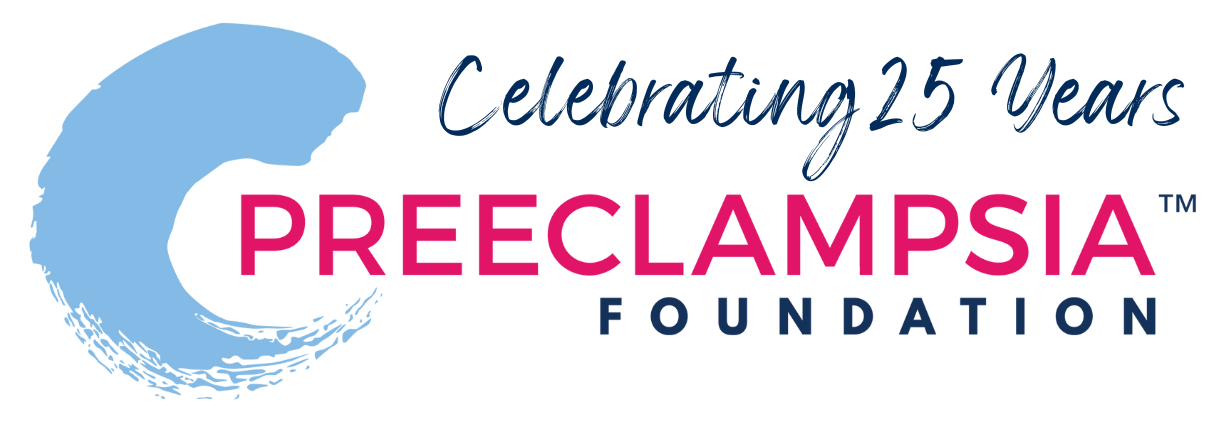1610109597.png)
12 Hour Nightmare
January 08, 2021 By Katherine Principe

I was formally diagnosed with mild preeclampsia at my 36 week prenatal appointment, after a week of elevating blood pressure readings and urine protein. My 35 week appointment was my first in person appointment in 7 weeks, given that I was otherwise low risk, and there was still so much unknown about Covid19. I was induced at 37 weeks, had an uneventful hospital stay, and my blood pressure was low enough that I was discharged 48 hours after delivery. My OB discussed the signs and symptoms of postpartum preeclampsia extensively with me, and my partner and I felt comfortable with the plan to discharge to home with self-monitoring of blood pressure. The next day, I felt like I had been hit by a truck. I chalked it up to being 3 days postpartum, and pushed through. I kept pushing off taking my blood pressure to care for my newborn. As the day went on, I began to experience additional concerning symptoms, including chest tightness and heart palpitations. That combined with an episode of tunnel vision led me to finally sit down to take my blood pressure at 9:30pm to find it was extremely elevated. I called the after hours OB nurse line, and was encouraged to present to the emergency room.
Once in the ER, I followed the instructions I was given at discharge from L&D: I provided my name, my OB’s name, my symptoms, and prenatal diagnosis of preeclampsia. I repeated this process countless times, to anyone who walked into my room. Because of Covid19 restrictions, I was alone in the ER. Unfortunately, I was provided little to no information on the plan of care, despite my attempts to ask questions and advocate for myself. I found myself on the Preeclampsia Foundation website reading as much as I could about postpartum preeclampsia, realizing that I ticked off all the boxes, and trying to use that to get the ER physician to understand the gravity of the situation. The ER physician informed me they wanted to work me up for cardiomyopathy. They stated they had called the on call OB, who recommended I be released and follow up with cardiology in the morning. If I wanted, they could admit me for observation overnight. At this point, my symptoms were continuing to worsen and all I could think was “if I stroke out, it can’t be my husband that has to deal with my body.”
I agreed to be admitted, and found myself on the cardiac floor. I again repeated my speech to all the nurses and physicians who walked into that room. My blood pressure was only being taken every 2-3 hours, and my symptoms continued to progress. I learned my liver enzymes were elevated, a lab that was written off by the medical team as a normal variation. I began to experience a pounding headache, and swelling of my hands and feet. At 7am shift change, I begged my new nurse to call my OB directly. I was brushed off, and told the internist would see me that morning. It was at that point I knew I needed to take things into my own hands. As soon as my OB’s office opened at 8:30am, I called them directly.
Within 15 minutes, my OB began working on transferring me to the L&D floor. Once I arrived on the L&D floor, the nurses worked quickly to start magnesium, provide me with the supplies I needed to take care of my 2nd degree perineal tear, help me use a breast pump to relieve engorgement, and get my newborn and husband readmitted (even though the hospital had restricted all visitors as of that morning). In total, it took over 12 hours from the time I walked through the doors in the ER until I received the appropriate care.
My message to every birthing person: you need to ask specific instructions regarding where to present should you have any postpartum complication. It turns out that I never should have been instructed to present to the ER by the on call nurse. The ER should have sent me directly to L&D. There was a total breakdown of protocol in my care, and I could have paid for it with my life. I am eternally grateful to my OB and to the L&D team.

I am a two-time survivor of postpartum preeclampsia. I am also a Licensed Professional Counselor and specialize in treating trauma in youth during...
ReadMore- Trust Your Gut, Mama: Our Preeclampsia Journey December 08, 2025
- Grief and Gratitude can Coexist November 25, 2025
- Listening To My Body Saved My Life November 24, 2025
- Marlene’s Preeclampsia and Hellp Syndrome Story November 24, 2025
- My Nightmare November 24, 2025
- Welcome To the World Little Fighter November 24, 2025
- Callan’s Birth Story November 24, 2025
- Almost Didn’t Make It November 24, 2025
- the World May Not See, but My Daughters Will An Honest Look At the Mess, the Love, and the Unseen Labor Of Motherhood By Kayla Lynn November 24, 2025
- Traumatic Birth For My First Boy but A Healthy Baby November 24, 2025
